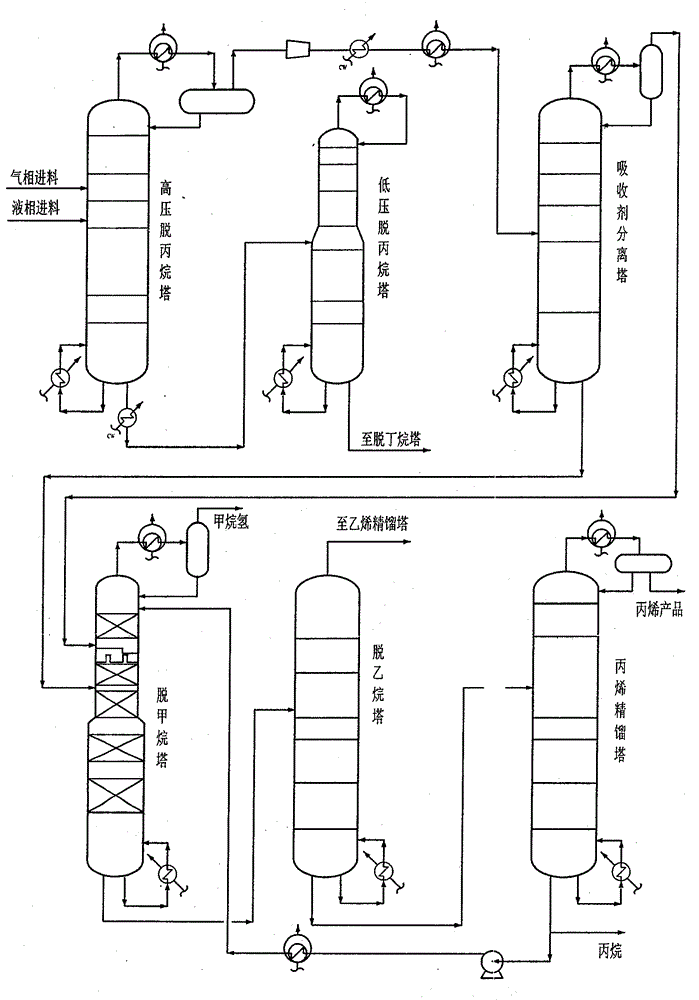Methanol-to-olefin preparation gas separation process
A technology for methanol to olefins and gas separation, which is applied in the purification/separation of hydrocarbons, distillation purification/separation, ethylene production, etc., to avoid the increase of energy consumption, reduce investment and energy consumption, and enhance the effect of absorption
- Summary
- Abstract
- Description
- Claims
- Application Information
AI Technical Summary
Problems solved by technology
Method used
Image
Examples
Embodiment Construction
[0022] The reaction gas produced by the catalytic reaction of methanol enters the high and low pressure depropanizer system after step-by-step boosting, drying, and cooling. C4 and its heavier components are separated from the bottom of the tower, and enter the debutanizer system, and C3 and its lighter components are separated from the top of the high-pressure depropanizer, and enter the absorbent separation tower after further compression and cooling , the material is initially separated from carbon 2 and part of carbon 3 in the absorbent separation tower. The gas phase at the top of the absorbent separation tower is condensed to -37°C and enters the demethanizer from the upper part of the tower. The liquid phase of the bottom of the absorbent separation tower is cooled to -37°C and enters the demethanizer from the upper part of the demethanizer as an absorbent middle. The second absorbent of the demethanizer comes from the bottom of the propylene rectification tower. The m...
PUM
 Login to View More
Login to View More Abstract
Description
Claims
Application Information
 Login to View More
Login to View More - R&D
- Intellectual Property
- Life Sciences
- Materials
- Tech Scout
- Unparalleled Data Quality
- Higher Quality Content
- 60% Fewer Hallucinations
Browse by: Latest US Patents, China's latest patents, Technical Efficacy Thesaurus, Application Domain, Technology Topic, Popular Technical Reports.
© 2025 PatSnap. All rights reserved.Legal|Privacy policy|Modern Slavery Act Transparency Statement|Sitemap|About US| Contact US: help@patsnap.com

